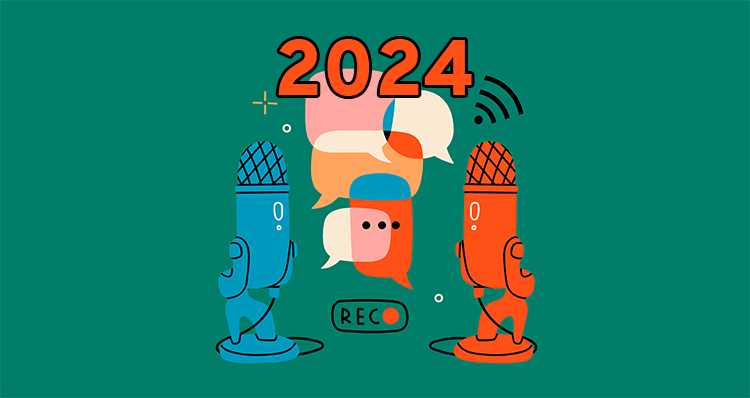Rockin' Out the E-Law
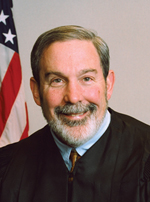
David Waxse
See “These Cases Rock.”
When electronic discovery disputes get heated in his courtroom, Magistrate Judge David J. Waxse of the U.S. District Court in Kansas has a simple strategy: “If someone comes to me and says, ‘So and so is impossible to deal with and we can’t get a deal done,’ I tell them, ‘Well, videotape the next [discovery conference] and let me watch it to see what’s going on.’
“I’ve never had to watch one of those videotapes. Just the idea that I’ll be watching it seems to put them all on their best behavior and suddenly they have an agreement.”
Waxse’s influence is no fluke. E-discovery consultant Mary Mack of the Portland, Ore.-based consulting firm Fios says judges who are ruling on the finer points of e-discovery are going to have an outsize influence for a long time.
“The law of e-discovery has largely been driven by a handful of federal judges who realized early on [that] electronic evidence was going to be a big issue in their courtrooms,” she says. “Fortunately, some of them have tackled it aggressively and have given guidance to a lot of other courts and judges.”
When new amendments to the Federal Rules of Civil Procedure for handling electronically stored information went into effect on Dec. 1, 2007, discovery was supposed to become easier to manage. Before the new rules were put in place, it was left up to judges to rule on how to handle digital evidence in court—a problem so thorny it often took hundreds of pages in opinions to sort it out.
But even with the new rules, many massive opinions continue to be written on the e-discovery issue. And jurists like Waxse, whom Mack describes as one of the more colorful judges around, are gathering an intense following.
“Anytime these judges write an opinion, it’s treated like a papal encyclical,” says Craig Ball, an e-discovery consultant and occasional court-appointed special master from Austin, Texas. “They really influence other judges, who act like these are the rock stars of their profession.”
These “rock star” judges are not surprised that they, and not the new rules, are still the final word in e-discovery. “Technology changes so fast that the rules can’t keep pace unless we’re there to apply them,” says Chief Magistrate Judge Paul W. Grimm of the U.S. District Court for Maryland. “I think it is analogous to cutting the lawn or trimming the flower beds. It looks fine and great on Saturday when I finish, but in a few days it’s all grown back and needs to be trimmed again.”
SCHEINDLIN LEADS
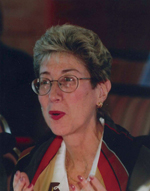
Shira Scheindlin
E-Discovery has been a contentious process ever since business records went digital, but the complications in handling digital records really became clear in 2004, when U.S. District Judge Shira A. Scheindlin wrote a series of influential opinions in Zubulake v. UBS Warburg.
It took five separate rulings and hundreds of dense pages of balancing tests, analysis and orders just to figure out what electronic evidence was discoverable; how the cost of retrieving, copying and distributing electronic records should be shared among parties; and whether sanctions should be imposed for failing to produce evidence. The case was so influential it was partially absorbed into the recent civil procedure amendments.
But judges are still refining e-discovery law because the Federal Rules of Civil Procedure and Federal Rules of Evidence are general guidelines, not detailed processes. For example, it is up to judges to determine whether digital evidence is reasonably accessible, or even to determine what electronic evidence is—something not always clear when talking about spreadsheets, databases or other unstructured data.
As more and more of people’s lives are wired, and individuals and businesses use more gadgets and devices to communicate, judges will have to determine whether those devices are discoverable for trial.
“The rules committee specifically rejected defining what’s accessible and not accessible,” says U.S. Magistrate Judge James C. Francis of the Southern District of New York. “They could have said you can never have access to backup tapes, because at the time those were considered to be prohibitively expensive to recover. But they wisely refrained from doing that—and today, not only are there companies that can recover data from backup tapes for very little [cost], but backup tapes are being replaced by much more accessible media.”
There may never be another ruling as long and involved as Zubulake, but e-discovery disputes continue to break out in many courts. Scheindlin has seen a slight uptick in discovery disputes since the amendments went into effect, but a small decline in sanctions. To her, this is a sign that the rules are helping define the limits of discovery and that parties are learning to play by the new rules.
“When I had the Zubulake case, it was just the opinion of one little court in New York,” says Scheindlin. “Now the rules say you don’t have to spend millions of dollars on potentially dry holes of evidence.”
FACCIOLA RULES
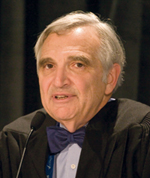
John Facciola
One reason why judges have such an outsize role in e-discovery is that many trials turn on pretrial discovery motions, which are rarely challenged or overturned.
“The fact is, almost all cases settle before trial,” says Magistrate Judge John M. Facciola with the U.S. District Court in Washington, D.C. “That means judges’ and magistrate judges’ rulings on discovery never get expiation on appeal. I can’t remember a discovery case that’s ever made it to the [U.S.] Supreme Court.”
Still, it makes big news when the White House claims months of e-mails may have gone missing, and Facciola is the magistrate trying to sort out that case with the oversize name, Citizens for Responsibility and Ethics in Washington v. Executive Office of the President.
And while that case puts both Facciola and e-discovery in the public eye, he has presided over or is currently handling some other cases that are doing what Zubulake did a few years ago: driving the law. That’s why Facciola, a “lowly” magistrate judge, has become a regular speaker at legal and high-tech conferences and events.
In 2003 he ruled in McPeek v. Ashcroft, setting a standard for determining when e-discovery is worth the cost. The ruling denied a Department of Justice employee’s request that the department search its computer backup system for evidence of retaliation.
Facciola was also recently involved in one of the few criminal cases to deal with an e-discovery dispute, U.S. v. O’Keefe. On Feb. 18, Facciola applied the civil rules to the case of a State Department worker accused of taking bribes to facilitate visas. “It is far better to use these rules than to reinvent the wheel when the production of documents in criminal and civil cases raises the same problems,” he wrote.
In that case, Facciola delved into one of the thorniest problems of e-discovery—how a court should consider the search terms and technology used to find electronic records. He called it “a complicated question involving the interplay, at least, of the sciences of computer technology, statistics and linguistics.” Facciola argued that electronic discovery is now too technical and complex for attorneys to assess adequately, and that experts may be necessary to determine whether an e-discovery search is adequate.
GRIMM ISSUES
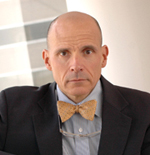
Paul Grimm
In 2007, Chief Magistrate Judge Paul Grimm of the U.S. District Court for the District of Maryland dealt with an even thornier question in Lorraine v. Markel American Insurance Co. Because both sides in this case (a suit over insurance coverage for a damaged boat) failed to offer electronic evidence to support their motions, Grimm denied a motion for summary judgment.
Under the Federal Rules of Evidence, a judge must determine whether a piece of electronic evidence is authentic and original, an issue no court had really touched on, even though digital evidence is easily manipulated.
In looking at the potential electronic evidence in Lorraine, Grimm had to consider such fundamental questions as: What is a document? In a 52-page opinion, he found five distinct evidentiary issues one side must cross to prove whether electronic data should be admitted into evidence at trial or accepted as an exhibit (see “Grimm’s Issues of ESI”). And though there are some very philosophical debates, Grimm says, the way to settle disputes is to involve experts, check people’s work and insist upon dialogue.
“The court works like our income tax system. It’s a voluntary system backed by audits,” he says. “There’s only so much time to resolve these issues, so you have to get in and check out how well it’s working and trust that the parties will keep to their agreements the rest of the time.”
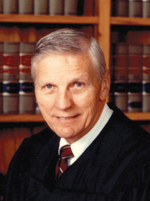
Rudi Brewster
One case that has gotten judges and litigators to appreciate the importance of successfully managing e-discovery is Qualcomm Inc. v. Broadcom Corp. In 2007, Senior U.S. District Judge Rudi M. Brewster in the Southern District of California found that Qualcomm and its witnesses concealed digital information from the court in a patent suit. Most important, before fining the company millions of dollars, the Southern District of California court ruled that ignorance of e-discovery problems is no defense. (A different magistrate judge sanctioned six Qualcomm attorneys in January, but Brewster vacated the sanctions in March to allow the lawyers to defend themselves, including use of the attorney-client privilege.)
“The court finds it unbelievable that the retained attorneys did not know or suspect that Qualcomm had not conducted an adequate search for documents,” Brewster wrote. “Producing 1.2 million pages of marginally relevant documents while hiding 46,000 critically important ones does not constitute good faith and does not satisfy either the client’s or attorney’s discovery obligations.”
These rulings help give guidance, but different courts still take different approaches to electronic evidence. In U.S. v. Meienberg in 2001, a Colorado federal court declined to throw out printouts of computerized records as inadmissible simply because they could not be authenticated. But in In re Vee Vinhnee, a central California federal bankruptcy court ruled in 2005 that electronic evidence was inadmissible unless “the record being proffered must be shown to continue to be an accurate representation of the record that originally was created,” a higher standard than most courts hold.
COOPERATE OR ELSE
Federal Rule of Civil Procedure 26(b)(2) mandates that lawyers meet and confer about discovery issues and agree on how to handle electronic evidence. Scheindlin, who was part of the federal rule-making committee, believes 26(b)(2) has had a positive effect.
“You can see lawyers are cooperating and collaborating more,” she says. “Our court has thousands of civil cases a year, but there are so few disputes in the scheme of things and even fewer sanctions.”
However, others say it will take more time for the legal profession to learn how to collaborate. “The problem is, it takes a generation to change the hearts and minds of the profession,” says Grimm. “This is an adversarial system, and cooperation is not the way lawyers today work.”
Francis agrees: “In my experience in my court, those kinds of deadlines are honored in the breach. The amendments have had a salutary effect, though the judge needs to keep things on track.”

James Francis
Judges and lawyers say fear of sanctions will force lawyers to become more cooperative. Otherwise, fear of driving the costs too high to go to trial will. “Lawyers are not kinder and gentler than they used to be, but the threat of mutually assured destruction hangs overhead if parties don’t get it together,” says Dennis P. Duffy, chair of the employment and labor practice at Baker Botts in Houston. “Parties can be made more cooperative if they are afraid the cost will get out of hand.”
A failure to meet and confer early and work with opposing counsel can destroy a case. Even though shifting the burden of cost from one party to another is accepted practice, U.S. District Judge Robert S. Lasnik of Washington state denied a motion to do so in Mikron Industries Inc. v. Hurd Windows & Doors Inc., because the requesting party had failed to meet and confer in good faith.
And, every so often, the system breaks down (or one party abuses it) and the judge has to issue sanctions, and disciplinary committees get involved. It’s a rare occurrence, but one that may be necessary to scare more parties into cooperating. “In our culture you have two adversaries yelling at each other. The key is the client,” says Waxse. “The in-house lawyers are telling their outside counsel that they don’t want a war; they want a solution.”
Judges say they also want to avoid sanctions at all costs. They are willing to give parties as many chances to work out a discovery agreement as possible. Some will go as far as trying to broker a resolution themselves. “I approach it like [alternative dispute resolution],” says Waxse. “I have them meet with a mediator and come to agreement if they can.”
“If you have a savvy judge like Grimm who knows e-discovery, there’s certainly an incentive to be more active and deal with the issues early,” says Duffy. “If you don’t get an agreement, it’s up to the judge to unravel it. In most cases a judge will help you resolve an issue if you put it on the table, but they won’t help surface an issue for you.”
CALL FOR HELP

Dennis Duffy
In other situations, judges have found outside help to be useful, most often in the form of a special master who becomes custodian of the digital evidence.
Waxse had one case where one side demanded to see software that could be analyzed only if it had another system created by a third party, which would have cost millions of dollars. He appointed a special master who simply called the third-party company, which agreed to let the plaintiffs use its system for free.
“Sometimes you need someone who knows their way around technology,” Waxse says, “even if it’s as simple as knowing who to call.”
The advantage of a special master is that a judge can give parties one last chance to fulfill their duty to preserve, collect and produce electronic evidence before sanctions are imposed.
“I don’t really have to wheedle or cajole anyone when I get involved in a case,” says Ball, who has been special master in several different jurisdictions. “By the time I’m brought in, someone has already failed to live up to their obligations, so I know where the problem is.”
Experts say the most important thing to discuss early is the scope of discovery, the handling of privileged documents and trade secrets, and identification of what is accessible and inaccessible data. Once those details are tackled, disputes about issues like search terms often come into play.
“There’s not a lot of holding hands and Kumbaya being sung. This is a difficult process for a lot of lawyers,” Grimm says. “There are battalions of bright, young attorneys ready to crank out motions and launch war on the opposing side, and now we’re telling lawyers to jump out of that mode and meet and confer and settle their disputes before coming to us.”
From the judges’ perspective, keeping e-discovery from getting out of hand is their primary function. Usually that means keeping the costs from spiraling out of control.
“Rule 1 of the Federal Rules of Civil Procedure is supposed to be a reminder to us to be fast, fair and frugal,” says New York magistrate judge Francis. “Cases differ in cost and complexity. You have to sit down and figure out things like how much money and resources should be spent for a case that has a maximum award of $250,000. E-discovery can easily cost millions of dollars if you don’t rein things in.”
Sometimes the lawyers provide their own help. James A. Batson, an attorney at Liddle & Robinson in New York City, was counsel of record for the plaintiff in Zubulake. He says lawyers need to know where potentially relevant digital information is as soon as litigation starts. He was recently involved in a case in which Francis had to sanction the defense for failing to preserve electronic evidence, something Batson says is actually very hard to prove.
“From my experience, it is important to make a record from which the judge can issue a ruling,” says Batson. “It was clear to us from the outset that the defendants failed to live up to their preservation duty, but as an attorney you only have so many chances to seek sanctions, so you have to do it right.”
To make his case, he took depositions from three experts on electronically stored information. When he came to the judge, Batson was able to show that one executive for the defendant firm should have had electronic evidence on his laptop, but that—contrary to company policy on electronic records—e-mails were destroyed.
Expert witnesses can authenticate data and the method of collection and ensure documents are not tampered with. “It’s a lot of work and expense,” Batson says, “but it’s what you have to do to make your case now.”
E-VOIDANCE?
As long as they abide by the new rules and timeline, lawyers are still in control of their strategy, even if the judge thinks it’s a stupid one.
According to several judges, some attorneys get together and decide not to involve electronic data at all.
“These days almost everything is digital, so it’s hard to believe you can provide competent representation by ignoring electronic evidence,” Waxse says. “But if the lawyers have considered the cost and the clients agree that they can get resolution to a case without [electronically stored information], I’m not going to force them.”
Ignoring digital evidence may put vital information out of bounds, but given the cost of hiring experts and properly handling data, it is a legitimate cost savings as long as information can be obtained from other sources.
“There is some question about how intrusive a court should be,” says Francis. “In the good old days, the responding party would come up with a plan to produce what the requesting party asked for and the court would tell you if it was sufficient. Now you have to consider things like what search terms to use and the best search technology, so there are many more layers of complexity.”
There is one area where judges agree that more guidance is needed, and that is protecting privileged documents. Right now, federal rules allow “quick-peek” and “claw-back” agreements, which allow discovery under protective order to protect privilege for documents inadvertently disclosed. In theory, lawyers save the expense of reviewing every document; but in practice, such documents are difficult to protect once they are out the door.
“Sophisticated lawyers say it’s a way to save money, but it’s just too risky to actually use it,” says Waxse.
From the lawyers’ perspective, the new world of e-discovery puts them in a difficult position. “You’re not doing the job for your client if you’re not zealous to a fault, but you’re not an effective advocate for them if you go before the judge and jury and get in trouble because you’re not forthcoming enough about discovery,” says Duffy. “It’s a precarious situation.”
But from the judges’ perspective, things are working well (with a few exceptions).
“I think the rules are more mechanistic than they need to be, but in practice, courts have been able to figure it out,” says Francis. “[Digital] data is a lot more complex than paper, and we need judges who can try to cut through and make sense of some very complex problems.”
And judges like Francis, Scheindlin, Waxse, Facciola, Grimm and Brewster are creating the e-discovery patterns other courts and cases will follow.
Sidebar
Grimm’s Issues of ESI
From Lorraine v. Markel American Insurance Co.
Be careful what you ask for, the saying goes, because you might actually get it. For the last several years there has been seemingly endless discussion of the rules regarding the discovery of electronically stored information. … Very little has been written, however, about what is required to ensure that ESI obtained during discovery is admissible into evidence at trial.
Whenever ESI is offered as evidence, either at trial or in summary judgment, the following evidence rules must be considered:
Is the ESI relevant as determined by Rule 401 (does it have any tendency to make some fact that is of consequence to the litigation more or less probable than it otherwise would be).
If relevant under 401, is it authentic as required by Rule 901(a) (can the proponent show that the ESI is what it purports to be).
If the ESI is offered for its substantive truth, is it hearsay as defined by Rule 801, and if so, is it covered by an applicable exception (Rules 803, 804 and 807).
Is the form of the ESI that is being offered as evidence original or duplicate under the original writing rule, or if not, is there admissible secondary evidence to prove the content of the ESI (Rules 1001-1008).
Is the probative value of the ESI substantially outweighed by the danger of unfair prejudice or one of the other factors identified by Rule 403, such that it should be excluded despite its relevance.
Preliminarily, the process by which the admissibility of ESI is determined is governed by Rule 104, which addresses the relationship between the judge and the jury with regard to preliminary fact-finding associated with the admissibility of evidence. Because Rule 104 governs the very process of determining admissibility of ESI, it must be considered first.
—Chief Magistrate Judge Paul Grimm
U.S. District Court, District of Maryland
Jason Krause is a freelance journalist in Madison, Wis., who contributes regularly to the ABA Journal.



